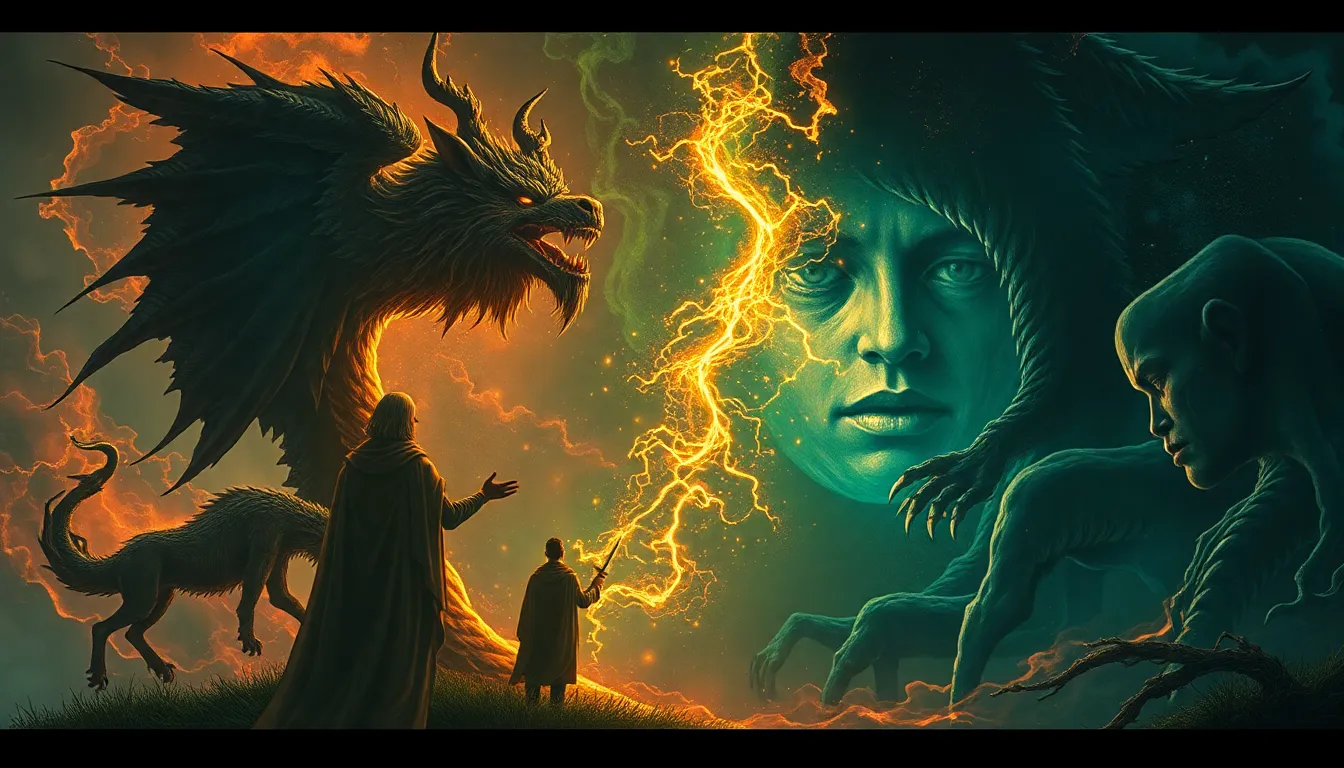Exploring the Underworld: Myths That Will Leave You Spellbound
Introduction to the Underworld: A Journey Beyond the Surface
The concept of the underworld is a profound aspect of human mythology, appearing in various forms across cultures. It often represents a realm beyond the physical world, a place where souls go after death, and a space filled with mysteries and moral lessons. The underworld is not merely a location but a complex interplay of beliefs, fears, and hopes concerning life after death.
Myths of the underworld serve crucial roles in storytelling and folklore, providing explanations for the unknown and offering insight into cultural values surrounding death and the afterlife. This article aims to explore various underworld myths from different civilizations, examining their significance, symbolism, and modern interpretations.
The Underworld in Ancient Civilizations: A Comparative Study
Throughout history, ancient civilizations developed rich narratives surrounding the underworld. Here’s a comparative study of some notable examples:
- Egyptian Underworld: Duat and the Journey of the Soul
Duat, the Egyptian underworld, is a mystical realm where the dead undergo trials to achieve eternal life. The journey is filled with gods, monsters, and the weighing of the heart against the feather of Ma’at, symbolizing truth and justice.
- Greek Underworld: Hades and the Realms of the Dead
In Greek mythology, Hades is both the name of the god and the underworld itself. It is divided into different regions, including the Elysian Fields for the virtuous and Tartarus for the damned. The myth of Orpheus and Eurydice illustrates the love and loss tied to this realm.
- Mesopotamian Underworld: The Land of No Return
The Mesopotamian underworld, known as Kur, is a dark and dreary place where souls go after death, devoid of joy or light. It reflects a more somber view of the afterlife, emphasizing the inevitability of death.
Norse Mythology: Hel and the Nine Realms
In Norse mythology, Hel is the realm of the dead, ruled by the goddess Hel, who is often depicted as half-living and half-dead. The underworld is intricately linked to Yggdrasil, the World Tree, which connects various realms, including the land of the living and the dead.
Significant figures in this mythos include:
- Hel: The ruler of the underworld, she receives those who die of illness or old age.
- Baldr: The beloved god whose death triggers a series of events leading to Ragnarok, the end of the world.
- Loki: A trickster god, whose actions often bring chaos not only to the living but also to the dead.
The Underworld in Eastern Mythology: A Tale of Rebirth and Karma
Eastern mythologies present unique perspectives on the underworld, often emphasizing cycles of rebirth and moral consequences:
- Hindu Underworld: Naraka
Naraka is a temporary hell where souls are judged based on their karma and sent to either higher realms or back to the cycle of reincarnation, known as samsara.
- Buddhist Concepts of the Afterlife
Buddhism also features Naraka, but it serves as a purgatorial space where beings experience suffering as a result of past actions before being reborn.
The cyclical nature of life and death in Eastern beliefs offers a contrasting view to the finality often present in Western mythologies.
Indigenous Myths and the Underworld: Diverse Perspectives
Indigenous cultures around the world possess rich narratives surrounding the underworld, reflecting their unique worldviews:
- Native American Cultures: Many tribes believe in an afterlife where ancestors watch over the living, and the underworld often serves as a place of transformation.
- Australian Aboriginal Dreamtime: The Dreamtime stories connect the living with the ancestral spirits and the underworld, depicting a continuous cycle of life, death, and rebirth.
- African Myths: Various African cultures emphasize the importance of ancestors, viewing the underworld as a realm where spirits reside, influencing the living.
Underworld Deities: Guardians of the Afterlife
Many cultures have deities associated with the underworld, each embodying unique characteristics and responsibilities:
- Anubis: The Egyptian god of embalming and the dead, Anubis oversees the weighing of the heart, guiding souls through Duat.
- Hades: The Greek god of the underworld, Hades presides over the dead and ensures the balance of souls.
- Osiris: As the Egyptian god of the afterlife, Osiris represents resurrection and judgment, symbolizing hope and renewal.
These deities reflect their cultures’ values and beliefs about death, the afterlife, and moral conduct.
The Symbolism of the Underworld: Life, Death, and Rebirth
The underworld is rich in symbolism, often representing the duality of life and death:
- Common Symbols:
- Rivers: Often depicted as barriers to cross, symbolizing the journey from life to death.
- Gates: Representing the thresholds between worlds, highlighting the transition from the known to the unknown.
These symbols have a profound psychological impact, influencing human consciousness and our understanding of mortality. Themes of transformation and renewal resonate across diverse cultures, suggesting a shared human experience in the face of death.
Modern Interpretations of Underworld Myths in Literature and Media
The legacy of underworld myths continues to influence contemporary storytelling:
- Influence on Storytelling: Ancient myths have inspired countless novels, films, and artworks, integrating themes of the underworld into narratives that explore human experiences.
- Case Studies:
- The Odyssey: Homer’s epic features Odysseus’s descent into the underworld, offering insights into the hero’s journey and the nature of death.
- Dante’s Inferno: A vivid exploration of the afterlife and moral retribution, depicting a structured hell that echoes medieval beliefs.
- Modern Adaptations: Films like “The Matrix” and “Coco” draw on underworld themes, reshaping them for contemporary audiences and addressing modern existential questions.
These representations shape our understanding of death and the afterlife, encouraging reflection on our own beliefs and values.
Conclusion
Myths of the underworld offer a captivating lens through which to explore fundamental human questions about life, death, and what lies beyond. From ancient civilizations to modern interpretations, these narratives reveal our shared fears and hopes, shaping cultural identities and beliefs. As we continue to explore these myths, we gain not only knowledge of different cultures but also a deeper understanding of our own relationship with mortality.



